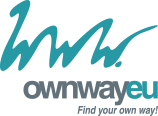One way to save money in HR is to improve personnel selection - to get the right people in the right place. The right fit means lower turnover rate, higher profitability and elimination of costs for recruitment campaigns, selection procedures, onboarding and training. There are online tools useful for making the selection process more efficient, but not all of them are reliable and accurate. The shortcomings of online questionnaires and tests are overcome by video diagnostics. Video diagnostics differs from ordinary video calling in several key factors contributing to better quality of personnel decisions and HR efficiency.
Online technologies are being developed in all fields and Human Resources (HR) is no exception. HR needs to identify a candidate's abilities quickly and accurately and to save time and money spent on HR marketing, candidate assessment and onboarding. Methods for improving personnel (pre)selection have great benefits. On the other hand, the commonly used tests and questionnaires have many disadvantages. You can't be sure if it is really the candidate passing the test. Further, there is a high risk of trying to manipulate the answers. Yes, you can measure the response time, but it is not possible to reveal everything. Another problem is the automated processing of results. The aim of automated diagnostics providers is to get a unified, standardized system. It's easier for fast assessment and immediate deployment. However, every company is different – there are various goals and management styles, values and culture, leaders and personalities of employees... and therefore different needs.
Is there any method overcoming the disadvantages of online tests? The answer is video diagnostics. It's not the same as ordinary video calling that many employers started using with increased time spent at home office.
VIDEO CALL X VIDEO CV X VIDEO DIAGNOSTICS - WHAT IS WHAT AND WHY IT IS NECESSARY TO DIFFERENTIATE IT?
In online communication, as well as in the offline world, we use synchronous and asynchronous forms of communication. Synchronous interaction takes place "here and now", we process incoming information and respond directly to them at the same time. For example, it is a conversation with a customer at the counter, a phone call or a chat interaction, when we are both online and involved in our communication exchange. In our case, these are video calls made via classic platforms enabling (video)calls such as Skype, Zoom, Teams, etc. Asynchronous communication takes place independently of communication partners' availability, such as letters, e-mails or SMS messages. This also includes so-called video questionnaires or short video introductions, which candidates record in advance before the employer reaches them. And this is also the case of video diagnostics. Unlike all previous variants, video diagnostics includes competency-based interview questions tailored to the position and also professional evaluation of the candidate's competencies made by a personnel psychologist.
The main advantages of video diagnostics are:
- you can see the candidate throughout the testing, you get a recording of his immediate reactions to challenging questions.
- there is an appropriate time limit for every answer and the candidate has to make proper decisions and express his or her own ideas spontaneously. There is no opportunity for adjusting the responses in a desirable way. If they try to think about manipulation, they would be short of time and the video recording reveals their attitudes even from their non-verbal communication.
You may be wondering, why you should start using a new special tool, when you've always communicated with candidates normally, and when it comes to checking their abilities, even a video call doesn't really change that much? Moreover, the vast majority of companies still meet candidates at least once in person before onboarding.

Legal aspects of insolvency and reorganization

The Real | Interim Manager for Your Changes

Manager work model
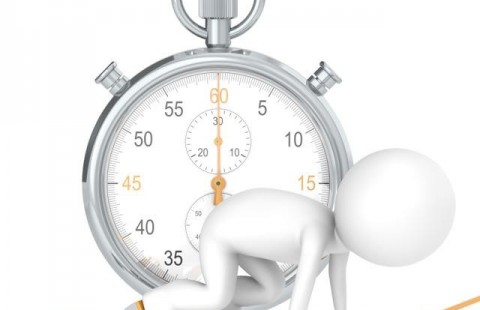
Time management - making use of time effectively
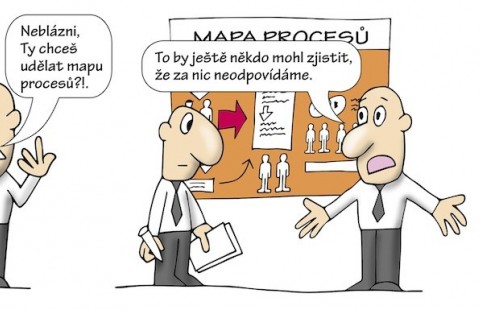
Jak správně tvořit mapu procesů

Modelling and setting the processes and procedures - ISO 9001

Training - preparation of the SWOT analysis and strategy
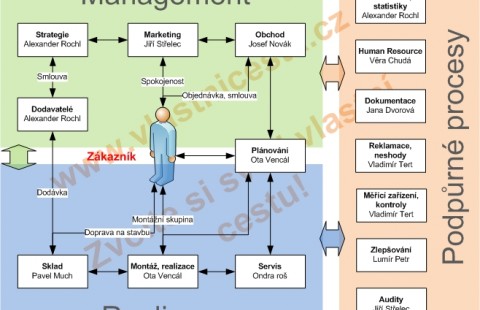
Company Management System of Quality Step by Step - ISO 9001
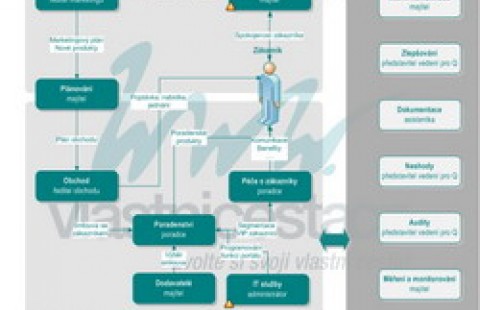
Process map acc ISO 9001 - business offer
MONEY COMES FIRST…
Regardless of the personnel selection process, all employers have one thing in common. The wrong choice costs money and also energy, which is lost with every bad decision. Employee turnover within the first months does not pay off. It is expensive - hundreds of thousands CZK - direct and indirect costs of repeated recruitment and employee selection (preparation of HR and hiring managers, advertising and promotion of the employer, organization and realization of all rounds of the selection procedures, salaries of interviewers, external services costs), onboarding - especially the time and salaries of all those people who take care of the newcomer, ranging from HR through IT to managers and colleagues, mandatory and other training, loss of profits - how much could you earn if you had the right people in the right place? Besides the financial issues and breakdown, there is also a huge risk of losing a good reputation of the company.
HOW DOES THIS RELATE TO THE VIDEO DIAGNOSTICS?
Video diagnostics is a reliable way to know the key characteristics of the candidate just in time and thus eliminate the above risks. Data-based personnel decisions are much more accurate than impressions made after a job interview, regardless of whether in person or via webcam. What makes the difference?
Video diagnostics is…
- based on the measurement of key competencies: You get relevant, objective data for decision-making from an independent source, comparable across candidates and employees. Unlike a regular interview, video diagnostics has a given structure and clear metrics for maximum accuracy in the assessment of each competency and each answer.
- tailored to the job position and corporate culture: You can choose from a database of hundreds of recommended questions in three languages and add your own questions.
- a professional psychological tool: psychological assessment is more accurate and goes deeper than “qualified” guess of HR and managers. The output combines a) a quantitative evaluation representing the rate of accomplishment in the given competencies and b) the psychologist's commentary, including recommendations for further work with the candidate.
- based on authentic expression, prevents stylization and impression management techniques: The candidate cannot give socially desirable answers in reaction to clues (unconsciously) provided by the interviewer. Candidates' answers depend only on themselves. They have the opportunity to show themselves as they really are.
- a modern tool to promote a positive candidate experience, thanks to comfort and high-quality feedback for applicants.
DOES VIDEO DIAGNOSTICS MEAN THE END OF PERSONAL CONTACT?
Of course not. Personal contact still has a place in choosing the right people. But honestly - can you get what can be easily obtained using video diagnostics? Even experienced personal psychologists admit that a structured video recording of the candidate's behaviour and his reactions provides a better opportunity to get to know his or her personality and work behaviour, compared to regular job interviews. We may continue to use personal contact as an indicator of "chemistry" between people and to strengthen the relationships with people we are sure we want to invest our precious time in. Video diagnostics brings data, accuracy in personnel evaluation and savings not only in HR. When it comes to personnel selection, why should you move to the next level? Because people do your business.
